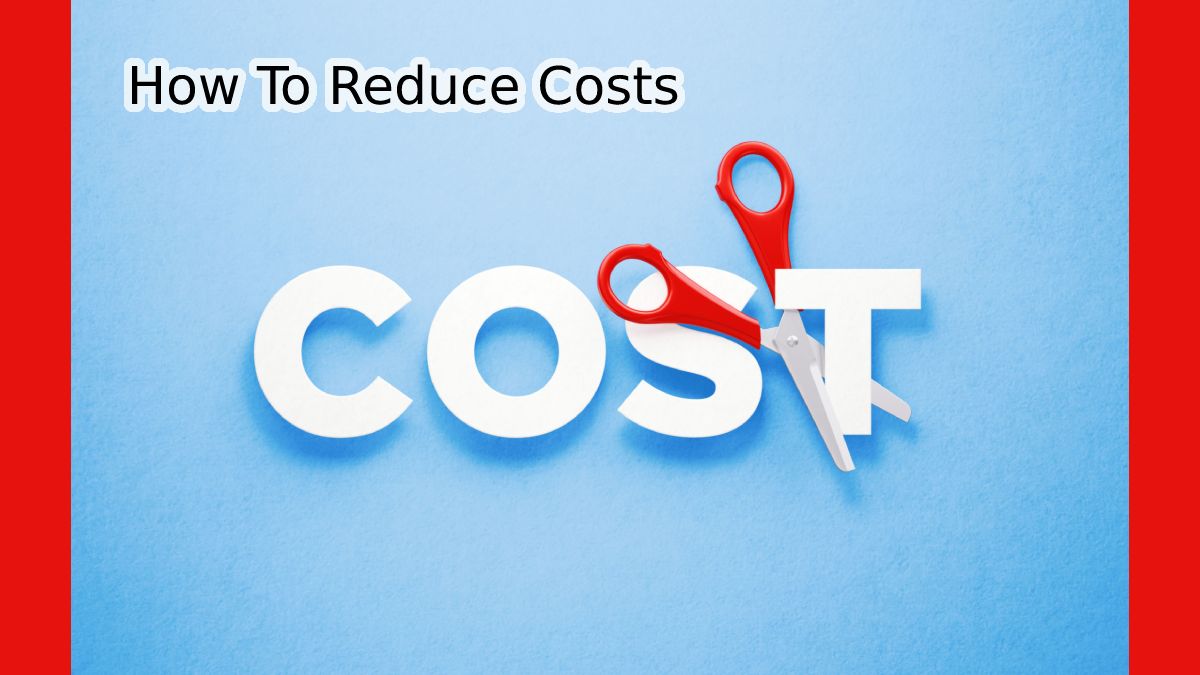How To Reduce Costs – After the crisis, we are experiencing a period of economic expansion, and US companies are less focused on reducing costs than on investment. These are the conclusions of CEPYME (US Confederation of Small and Medium Enterprises) in its annual study ” Financial Diagnosis of the US Company “, published last year. In fact, according to the latest data provided by the institution, company turnover increased by 5.9% in 2017. But reducing costs is always necessary and can help ensure long-term company growth.
Obtaining the maximum benefits from the minimum costs must be the economic objective of any business organization. But what can be done to reduce costs?
The most important thing is to locate the primary sources of expenses in the organization, and for this, it can be helpful to raise some questions in the company.
Table of Contents
Questions that companies can ask themselves to try to reduce costs
Determine if the company is making an expense forecast as a regular exercise that can benefit the company. Some of the questions that can ask are the following.
1. Do we have the suppliers with the most competitive prices?
The relationship between the company and its suppliers is not based exclusively on the price of the products or services but also other criteria such as trust, quality, etc. But staying open to finding more competitively priced providers can help you cut costs or negotiate prices and payment terms with your current provider.
It is advisable to periodically review the agreements with the supplier companies and compare them with other market agents.
2. Are inventory costs too high?
reduce-inventory-expenses
Having enough products to meet demand is essential. But storing stocks above what is necessary can be a cost for the company, which has its assets idle for an indefinite period. For that reason, inventory control is one of the critical areas in the organization.
The support of software programs such as ERP (Enterprise Resource Planning) or BI (Business Intelligence) can help predict future demand, set the optimal amount of stock, and thus contribute to a more efficient supply chain operation.
3. Do we have our IT equipment updated?
One of the hidden costs that often go unnoticed is working with obsolete equipment, devices or systems.
A well-known study carried out by Intel in Argentina determined that SMEs lose up to one month of work per year due to obsolete equipment. The losses would reach about 17,400 dollars for each PC in economic figures.
In addition to breakdowns and the work of IT staff, slow equipment and interruptions represent a significant loss of productivity for the workforce.
4. Can we save costs on software licenses?
Save costs in the current context, and the digital heritage is one of their main assets. But software licenses can be expensive, and the price per user the charges primarily affects large companies due to their more significant volume of staff. Still, SMEs find it more challenging to afford certain business software products.
44% of Spanish SMEs say that their main obstacle to fully immersing themselves in digital transformation is the necessary investment.
Regarding the licenses of programs and applications, an alternative is a free software. Another possibility is to implement platforms that allow the integration of all the necessary tools, centralizing all the activity and thus avoiding the payment of multiple licenses to different digital providers.
5. Do we pay more than necessary for social security?
Often the company may have higher insurance costs than necessary, such as overlapping coverage between different policies.
To avoid this, it is necessary to review the insurance contracted periodically. However, compare it with other current offers on the market, and ensure that the different coverages do not overlap.
6. Do we pay too much for energy?
Companies cut costs. Another source of cost overruns can be the electricity bill. Although consumption depends on the type of activity, energy saving is an effective way to reduce costs in many cases.
Implementing consumption saving measures, analyzing whether the contracted electrical power is higher than necessary or seeking a better offer with other marketers are some of the alternatives.
7. Can we outsource any of the company’s activities?
Outsourcing can help reduce facilities, personnel, technological equipment, and energy costs.
In addition, outsourcing services to delegate them to specialized companies allows the organization to focus on its main activity and, in some cases, improve its competitiveness.
In addition to these seven questions that can ask to limit expenses in the company. What helps the most to reduce costs is innovation within the company. For this reason, highly recommended that companies invest a part of their profits in R&D


